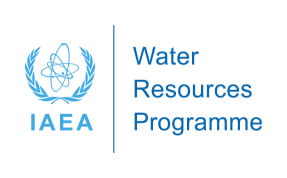Speaker
Dr
Heike Brielmann
(Environment Agency Austria)
Description
While nitrogen and oxygen isotopes in nitrate are widely applied to differentiate potential sources of nitrate in groundwater such as precipitation, chemical fertilizers and manure or sewage water, without any additional tracers the source distinction of nitrate from manure or sewage water is still difficult. Even the application of boron isotopes can in some cases not avoid ambiguous interpretation. However, based on local conditions and the focus of water protection measures this differentiation can be of particular importance.
Therefore the Environment Agency Austria developed a new multi parametrical indicator test to allow the identification and quantification of pollution by domestic sewage water. The test analyses 8 substances well known to occur in sewage water: acesulfame and sucralose, benzotriazole and tolyltriazole, metoprolol, sotalol, carbamazepine and the metabolite 10,11-Dihydro-10,11-dihydroxy-carbamazepine. These substances are polar and degradation in the aquatic system by microbiological processes is not documented. These 8 substances do not occur naturally which make them ideal tracers. The test is able to unveil about 0.1 % of wastewater in the analyzed water sample.
In two Austrian regions characterized by intensive agricultural activities (Marchfeld and Wulkatal) ground- and surface waters with a different range of nitrate concentrations have been analyzed for nitrogen and oxygen isotopes in nitrate to identify the nitrate source. To further differentiate between manure and sewage water the newly developed multi parametrical indicator test was successfully applied.
In the Marchfeld region, some of the selected groundwater wells show a sewage influence of up to 1-3 %. In the Wulkatal area, the Wulka River itself is strongly impacted by sewage (about 25%), while the investigated groundwater show negligible impacts of municipal sewage.
In summary, the results allow a reasonable quantification of nitrate sources from different types of fertilizers as well as sewage water contributions close to villages and in wells recharged by bank filtration.
[1] Humer et al. EGU2013-5332
Primary author
Dr
Heike Brielmann
(Environment Agency Austria)
Co-authors
Franko Humer
(Environment Agency Austria)
Dr
Manfred Clara
(Environment Agency Austria)
Dr
Martin Kralik
(University of Vienna)
Dr
Sandra Kulscar
(Environment Agency Austria)
Dr
Sigrid Scharf
(Environment Agency Austria)
Dr
Stefan Weiss
(Environment Agency Austria)
Susanne Voerkelius
(Hydroisotop GmbH)

